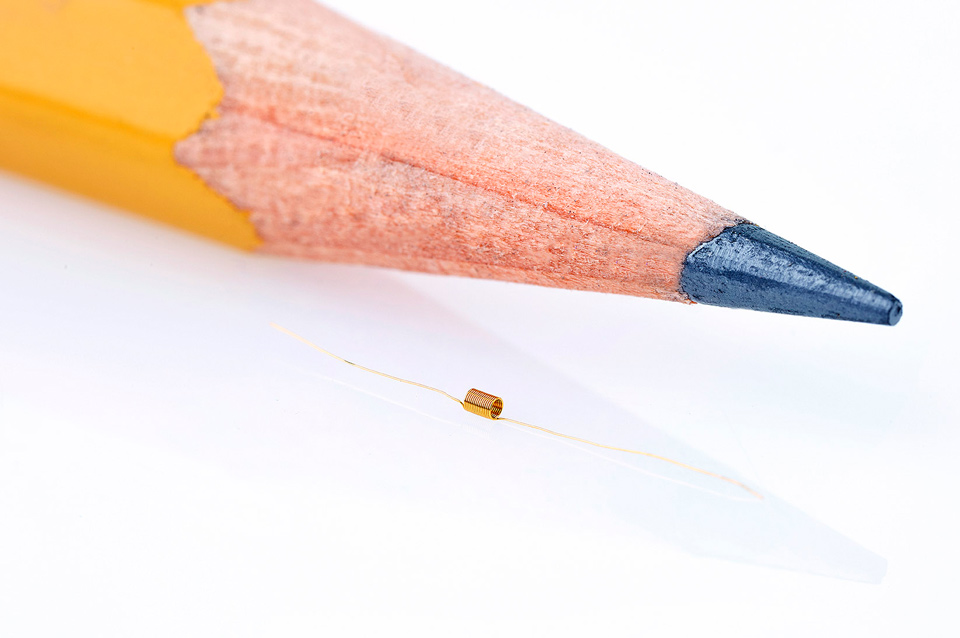The Large And The Small Of Product Photography
Spotlighting Shoots in North Reading (Large), and Dracut, MA (Small)

There are certain challenges that come with photographing products of unusual sizes – whether they are extremely large or practically microscopic. Products of a particular scale require photographers to adapt their techniques and equipment, while also maintaining a certain flexibility that allows them to come up with on-the-spot creative solutions.
Incidentally, the challenges that arise when shooting large products versus small products are often contrasting. For example, with large products, the main issue a photographer typically faces is the immobility of the product. While with small products, the main problem often involves maneuverability for the opposite reason – with the pieces being so tiny, they are difficult to handle.
Photographing a Large Piece of Equipment in North Redding, MA
Recently, Teradyne of North Redding, MA, asked me to shoot one of their electronic chip testing machines, theUltraFLEXplus. At roughly three times the size of a commercial photocopier, this is the kind of machine you cannot move for a photoshoot.
And with that typically comes three distinctive challenges for a photographer:
1. Product must be shot on-location
A product as large as Teradyne’s testing machine is clearly one that must be shot right where it is, right on-site. And as any on-location photographer knows, deciding what equipment to pack for an on-site shoot requires a lot of preparation and experience. This is particularly true for large product shoots as you never know what unique obstacles you may face.
You have to be prepared for anything – so packing extra tools is key. And, as it turns out, it’s a good thing I packed more than usual for this particular shoot, as there were a few surprises when I got there.
2. Photographer must work around where the product is positioned
It wasn’t until I arrived at the site that I discovered the machine was not the only unmovable obstacle I would have to work around. As it so happens, this machine was sandwiched between two fixed partitions and backed up into a corner where a cabinet – also unmovable – was hanging.
But that is the nature of photographing products of this scale: you have to work around where the product is positioned. For this particular shoot, that meant finding creative ways to move myself and light the product in order to get the right shot.
3. Proper lighting may require creativity.
Properly lighting large immovable products can be challenging for two reasons. Firstly, the sheer size requires larger light sources and more of them. Secondly, you’re at the mercy of however the product happens to be positioned, so lighting it from the proper angles may require some creative maneuvering.
In the case of the UltraFLEXplus, the two fixed partitions made the lighting process particularly involved. I ended up using a six-foot softbox and four additional lights, including one that I jerry-rigged in the corner on top of the cabinets using a couple of arms and a C-stand.
Photographing Small Products in Dracut, MA
On the opposite end of the spectrum, sometimes products are so small they generate a contrasting set of challenges.
For instance, I did a product shoot for Microwave Components Inc. in Dracut, MA, recently that involved coils that were so small they were almost difficult to see. In fact, at one point in the shoot, one fell off the table, and we almost never found it again!
A few unique challenges may arise when shooting small products:
1. Specialized Equipment may be necessary
It is important for photographers who are shooting exceptionally large or small products to know what type of equipment is available to them, regardless of whether they own the equipment themselves or not. When it came to shooting the tiny coils, I knew I would need a specialized lens in order to get close enough to the product while still keeping it in focus. So I rented a 5x macro lens which, as the name implies, provides 5 times greater magnification, enough to fill the frame with Lincoln’s head on the side of a penny.
2. Showing Scale Requires Creativity.
When clients have products that are particularly small, they are typically interested in creating context or showing scale with some universally recognized item, like a penny or a pencil tip. In the case of the coils, we also used key and a ruler. With these shots, we were able to show in pictures just how small these coils are.
3. Maneuvering the product can be difficult.
In fact, these coils were so tiny, the client and I had to use tweezers to move them into the right position for each shot. Products this small are often delicate, so they must be handled carefully. This can be challenging, as there is a lot of maneuvering necessary in order to get the shot properly framed up and in focus.
Choosing the right photographer
Just as it is with any other type of photography, choosing the right photographer for your large or small-scale product shoot is all about finding someone with experience shooting products of these unusual sizes.
If you have any questions or would like to learn more about how I can help, contact me any time.
Tags: professional photographer, headshot photography

